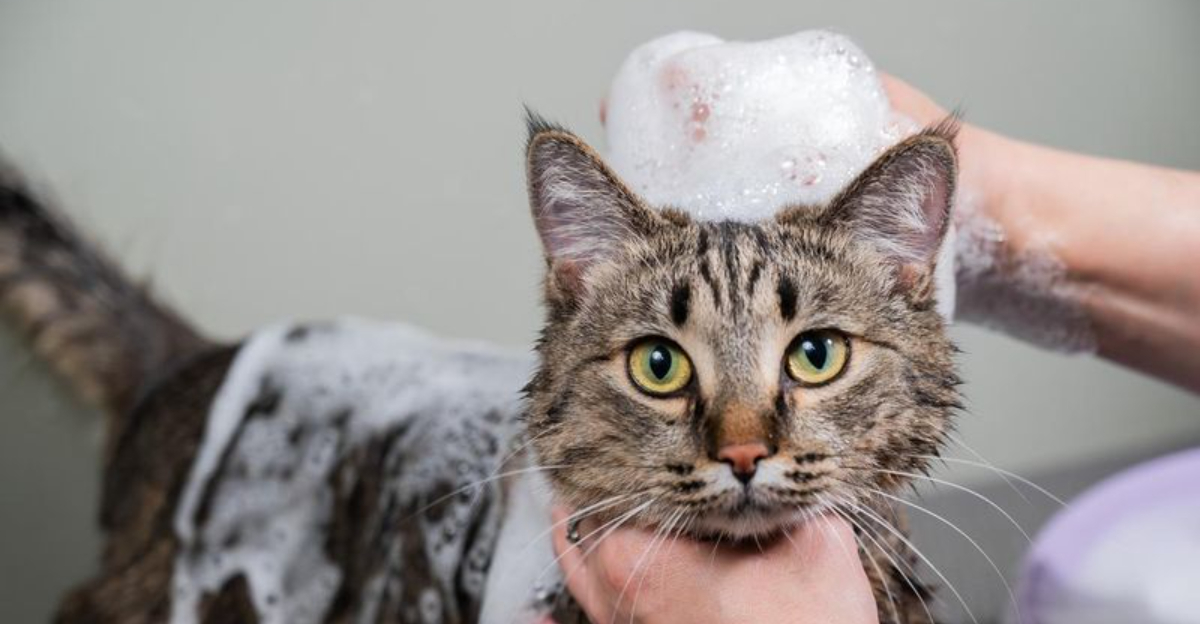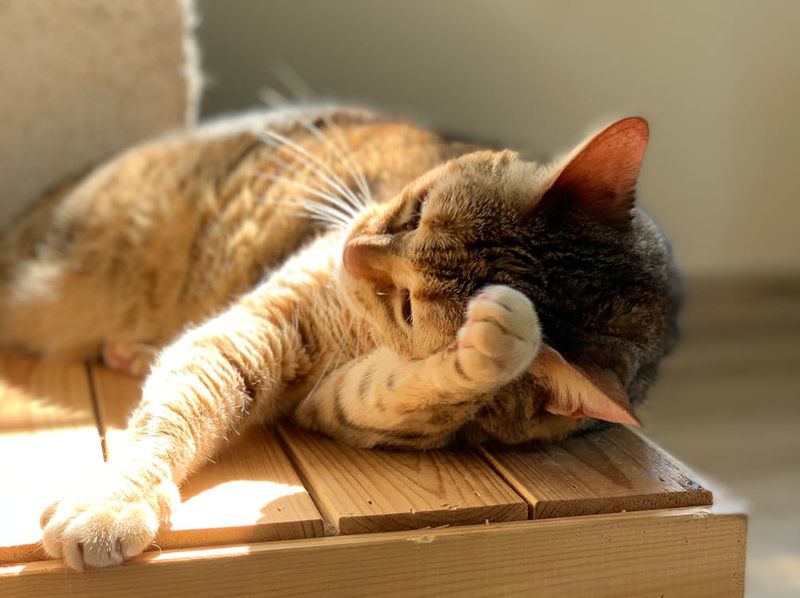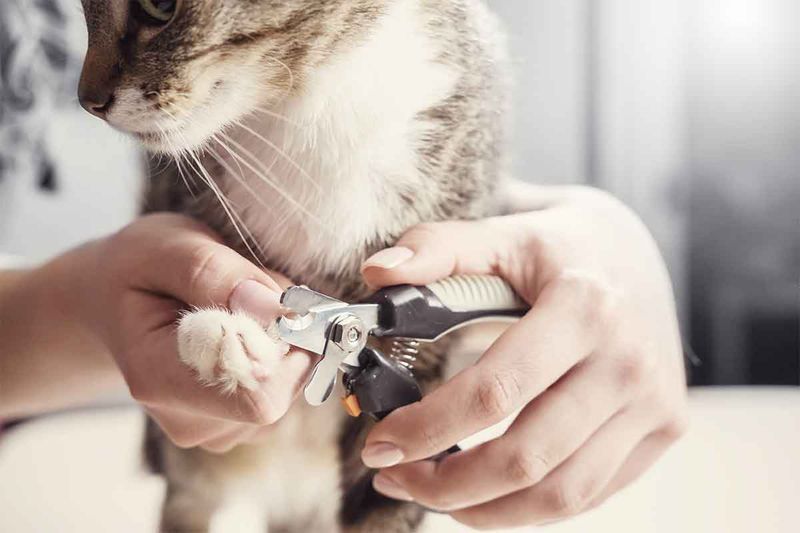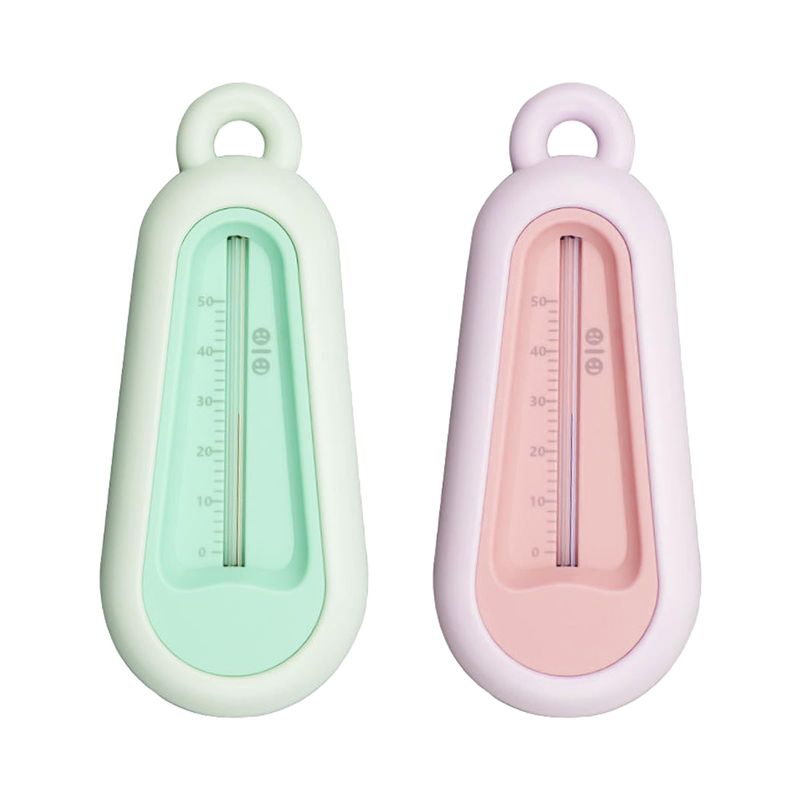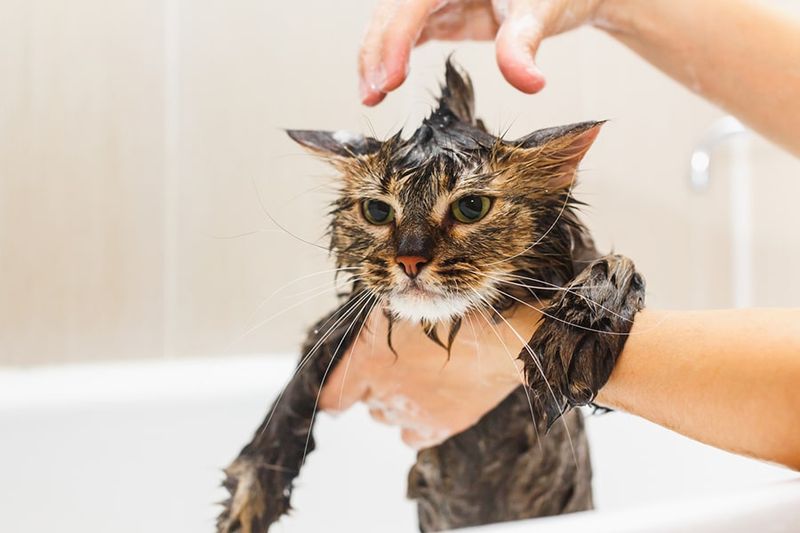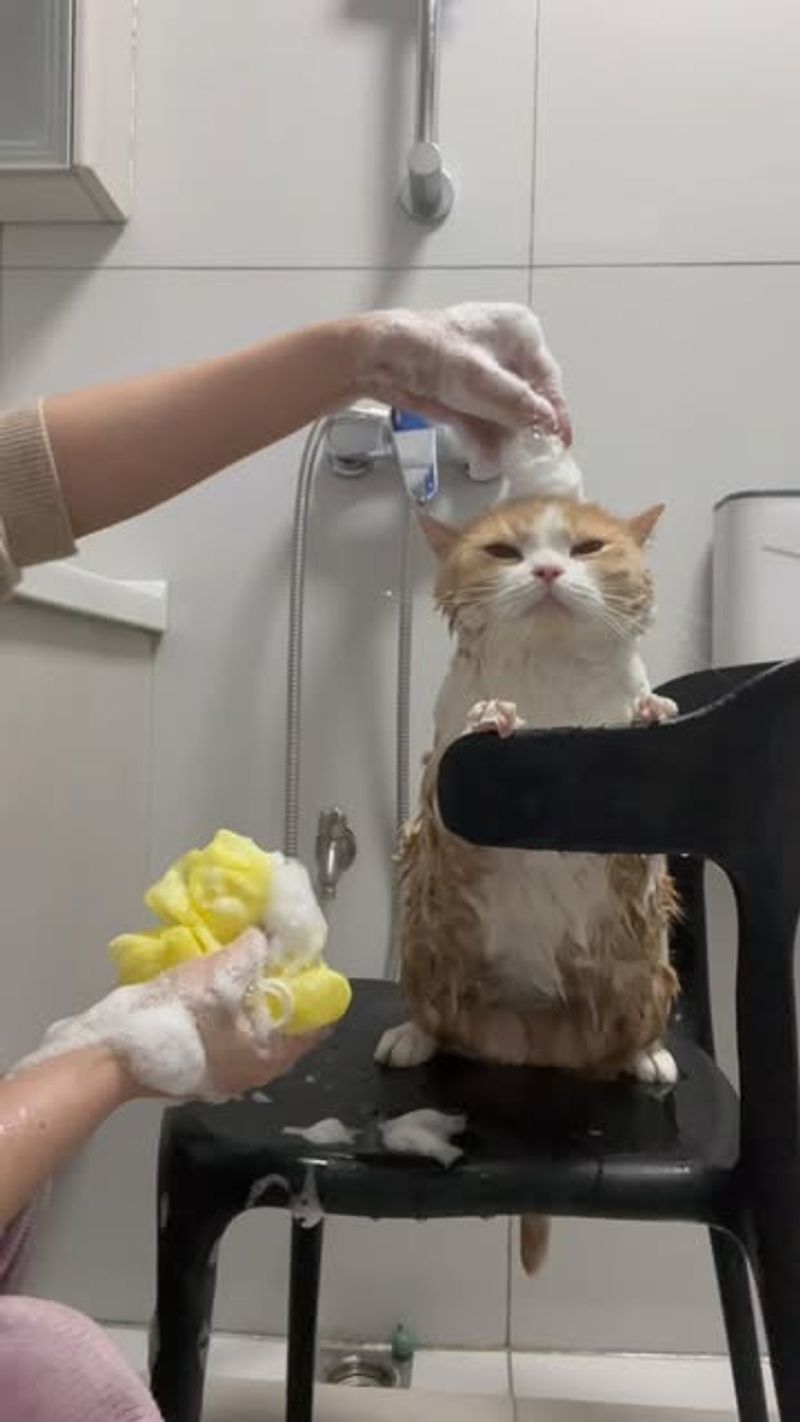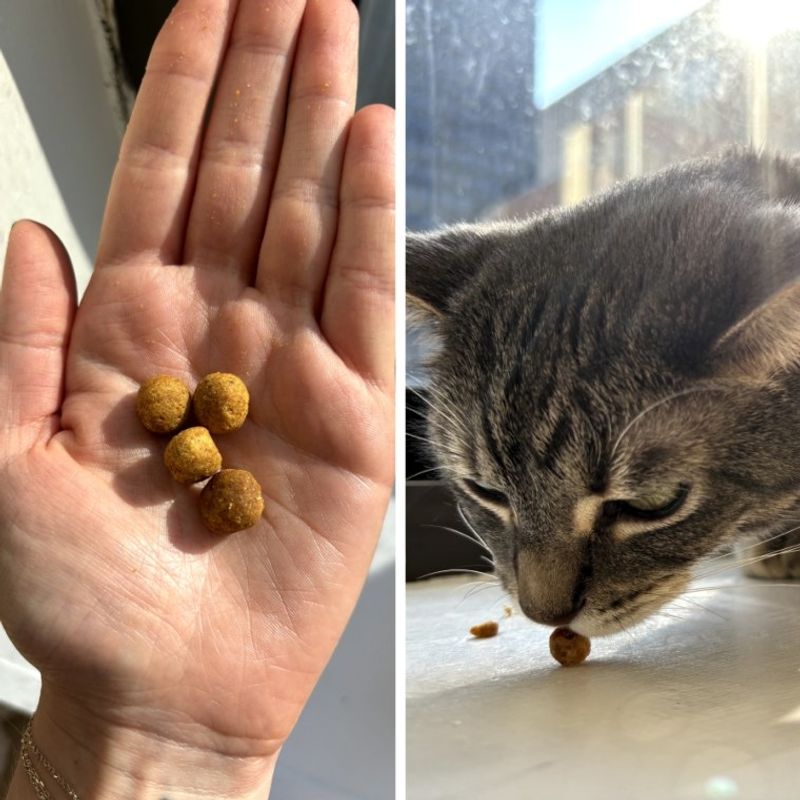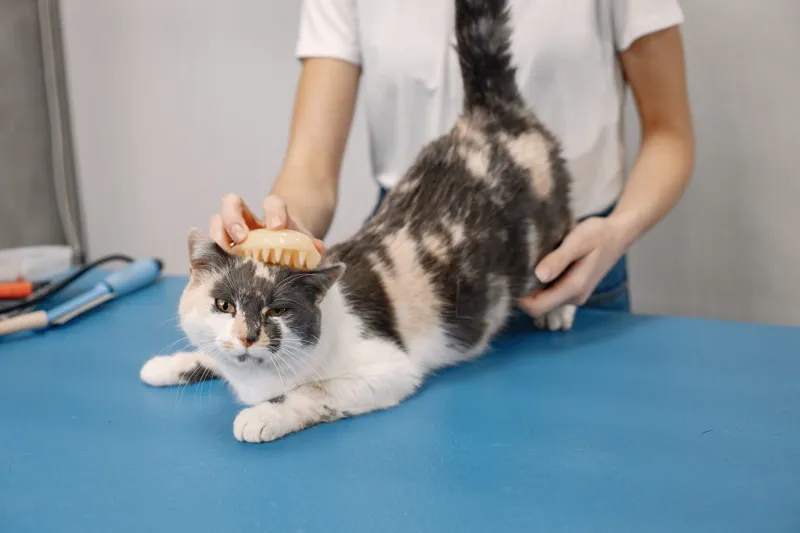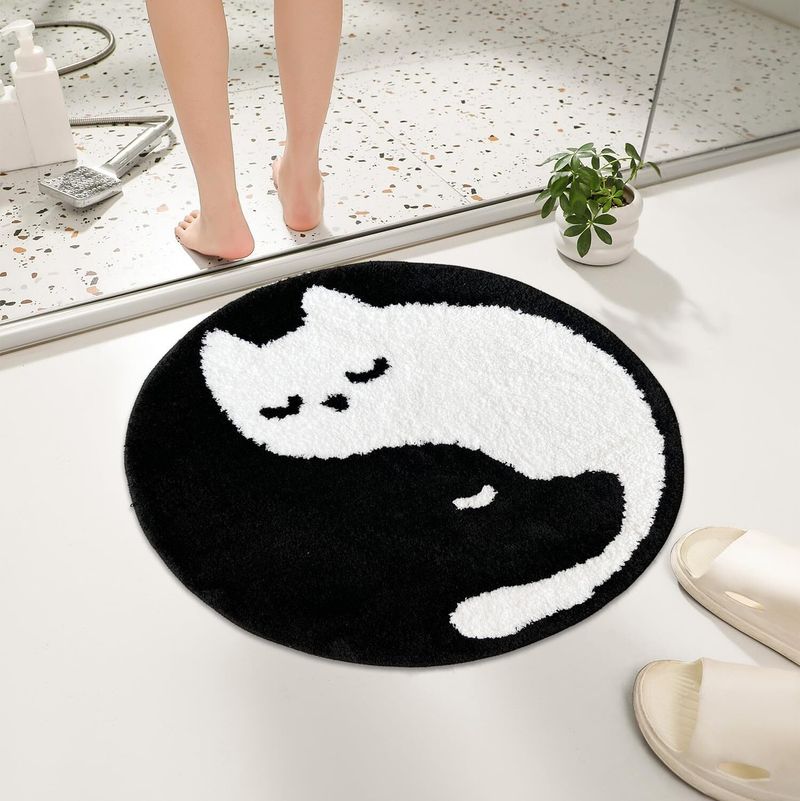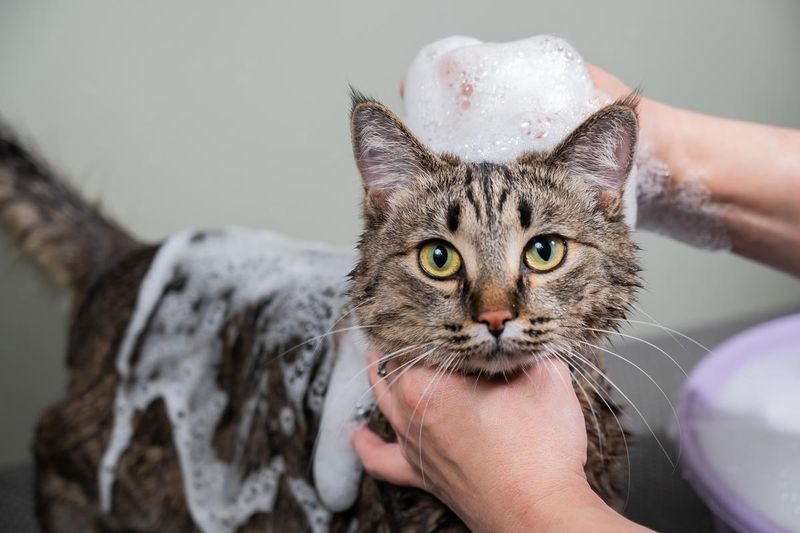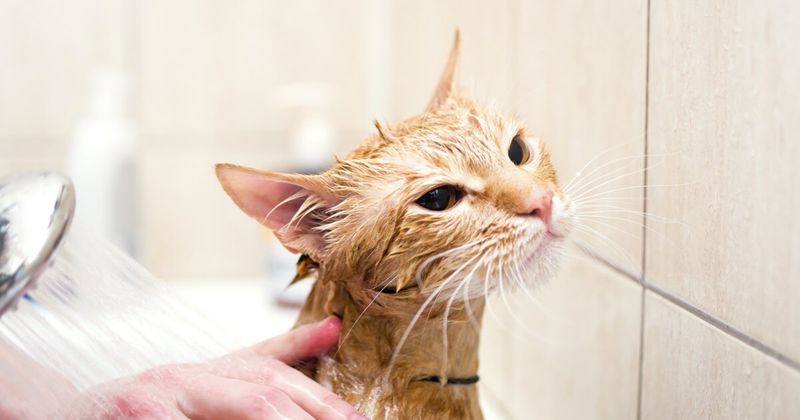📖 Table of Content:
- 1. Choose the Right Time
- 2. Gather Supplies First
- 3. Trim Their Claws
- 4. Brush Out Knots
- 5. Test Water Temperature
- 6. Use a Gentle Spray
- 7. Shampoo Sparingly
- 8. Keep It Short
- 9. Dry Gently and Thoroughly
- 10. Reward with Treats
- 11. Consult a Professional
- 12. Use a Bath Mat
- 13. Keep Calm and Reassure
- 14. Monitor Body Language
- 15. Practice Patience
Bathing a cat can be a daunting task, especially if it’s their first experience with water. However, with the right approach and preparation, you can make your cat’s first bath a pleasant and stress-free event. Here are 15 essential tips to guide you through the process and ensure both you and your feline friend come out of it happy.
1. Choose the Right Time
Timing is everything. Pick a moment when your cat is calm, such as after a meal or playtime. A relaxed cat is more likely to tolerate a bath without a fuss. Avoid bathing them when they’re agitated or anxious, as this can lead to a negative experience for both of you. Create a peaceful environment by dimming the lights and playing soothing music. This will help set a calming atmosphere. Remember, a happy cat is a cooperative cat, making the bathing process much easier.
2. Gather Supplies First
Preparation is key. Before you even think about turning on the water, make sure all your supplies are ready. You’ll need cat-specific shampoo, a couple of towels, and a non-slip mat. Having everything within arm’s reach will prevent any unwanted surprises. It also means you won’t have to leave your cat unattended, which can ramp up their stress levels. A well-organized setup leads to a smoother bath for both you and your pet.
3. Trim Their Claws
Safety first! Trim your cat’s claws a day or two before the bath. This precaution protects you from scratches if your cat gets startled by the water. It’s best to do this when your cat is relaxed, perhaps during a cuddle session. Remember to use proper cat nail clippers and reward them with a treat afterward. This not only keeps you safe but also reinforces positive behavior. A little preparation goes a long way in ensuring a scratch-free experience.
4. Brush Out Knots
Smooth out those tangles! Before bathing, give your cat’s fur a good brushing to remove knots and loose hairs. This will prevent matting once the fur is wet. Use a gentle brush suitable for their coat type. This step not only prepares their coat for washing but is also a lovely bonding time. Cats enjoy being pampered, and brushing is a way to show affection. Plus, a tangle-free coat dries more quickly and evenly after the bath.
5. Test Water Temperature
Getting the temperature just right is crucial. Cats are sensitive to extremes, so the water should be lukewarm. Too hot or too cold, and you might have an unhappy feline. Use a thermometer if necessary, or test it with your elbow like you would for a baby. Comfortable water will help keep your cat calm. Remember, the goal is to create a pleasant experience, and the right water temperature is a significant part of that.
6. Use a Gentle Spray
A gentle touch makes all the difference. Use a hand-held showerhead with a gentle spray setting. This allows you to control the water flow, ensuring it’s not too forceful. Gently wet your cat starting from the back, avoiding their head. This approach helps prevent panic and keeps water out of their ears and eyes. A mild spray creates a more spa-like experience, and your cat will appreciate the thoughtful care you take.
7. Shampoo Sparingly
Less is more when it comes to shampoo. Use only cat-specific shampoo and apply a small amount. Cats have sensitive skin, and too much shampoo can irritate it. Lather gently, concentrating on areas that need cleaning. Rinse thoroughly to ensure no residue is left behind. The right amount of shampoo not only cleans but also maintains the natural oils in your cat’s fur. Your feline friend deserves a gentle yet effective cleanse.
8. Keep It Short
Quick and efficient is the way to go. Aim to keep the bath time under ten minutes. Prolonged exposure to water can make your cat uncomfortable and restless. Work quickly but gently, ensuring you cover all necessary areas. Once done, wrap your cat in a warm towel to dry them off. Keeping the bath short shows respect for your cat’s patience and helps maintain a positive experience.
9. Dry Gently and Thoroughly
After the bath, drying is crucial. Use a soft, absorbent towel to pat your cat dry, being careful around their ears and face. Avoid using a hairdryer, as the noise and heat can stress them out. If needed, use a second towel to ensure they’re completely dry. A gentle drying process helps your cat feel comfortable and loved after the bath. It’s a chance to give them extra cuddles and reassurance.
10. Reward with Treats
Positive reinforcement works wonders. After the bath, reward your cat with their favorite treats. This helps them associate bath time with something pleasant. Ensure the treats are healthy and given in moderation. Over time, your cat will be more willing to accept baths, knowing a tasty reward follows. Treats not only serve as a reward but also as a way to reinforce positive associations with bathtime. A happy ending to the bath ensures future cooperation.
11. Consult a Professional
When in doubt, seek advice. If you’re unsure or your cat is particularly anxious, consult a professional groomer or veterinarian. They can offer tips tailored to your cat’s personality and needs. Sometimes, leaving it to the experts ensures the best experience for your pet. Professionals have the tools and expertise to handle even the most stubborn felines. Ensuring your cat’s comfort and safety is always the top priority.
12. Use a Bath Mat
Prevent slipping with the right tools. Place a non-slip mat in the tub to provide your cat with firm footing. A secure surface helps reduce anxiety and prevents accidental slips. This simple addition can make a big difference in your cat’s comfort level. Safety is paramount, and a bath mat offers just that. Your cat will appreciate the stability, making them more relaxed throughout the bath.
13. Keep Calm and Reassure
Your attitude sets the tone. Stay calm and speak softly to your cat during the bath. Your reassurance helps them feel safe and secure. Avoid sudden movements and keep your touch gentle. A calm demeanor can make the experience less frightening for your cat. By showing patience and understanding, you help build trust. Your cat picks up on your emotions, so maintaining a soothing presence is key.
14. Monitor Body Language
Understand what your cat is telling you. Pay attention to their body language during the bath. Signs of stress include flattened ears and a twitching tail. If you notice these, give your cat a break and try again later. Recognizing when your cat is uncomfortable allows you to adjust your approach. Being attentive to their signals ensures a more pleasant experience for both of you. Communication is key to a successful bath.
15. Practice Patience
Patience is a virtue, especially with cats. Not every bath will go smoothly, and that’s okay. Practice patience and give your cat time to adjust to the process. It may take a few tries before they’re completely comfortable. Remember, each cat is unique, and some may take longer to adapt. Your patience demonstrates love and care, building a stronger bond. Every bath is a step towards making the experience routine and stress-free.
